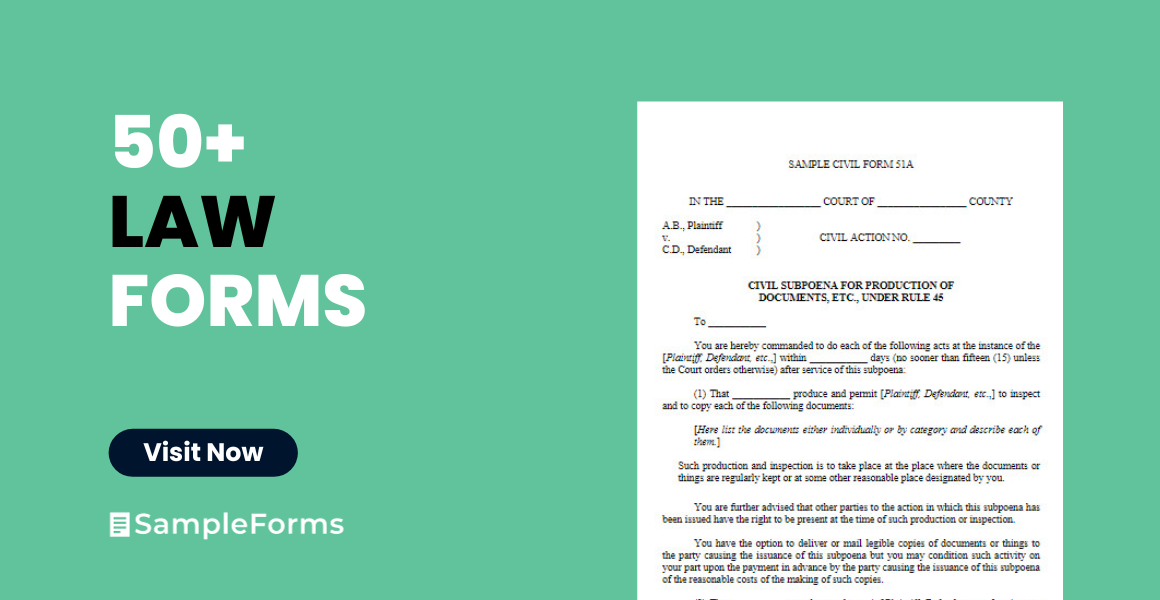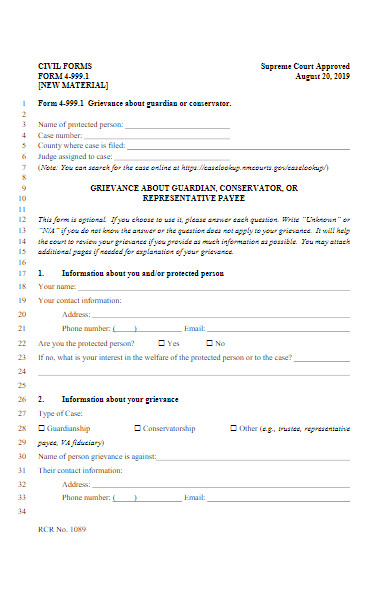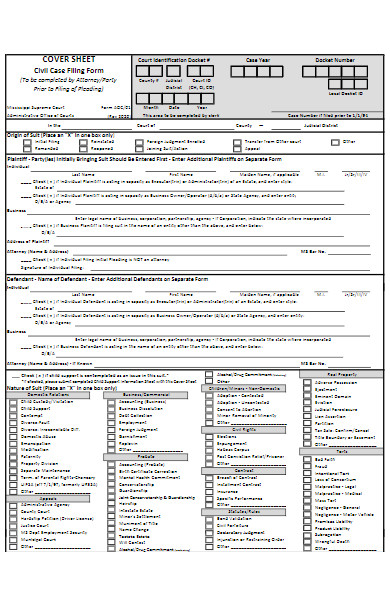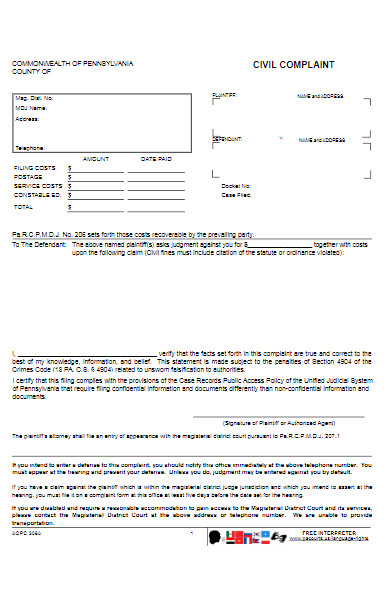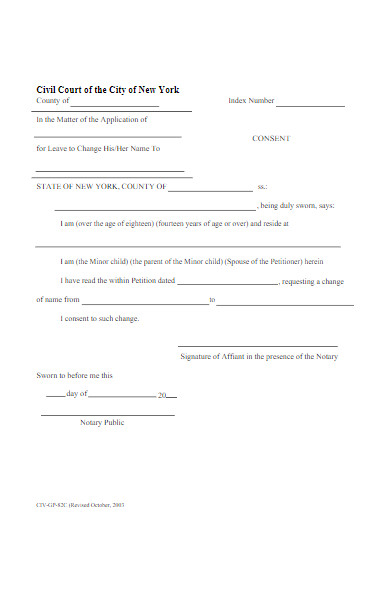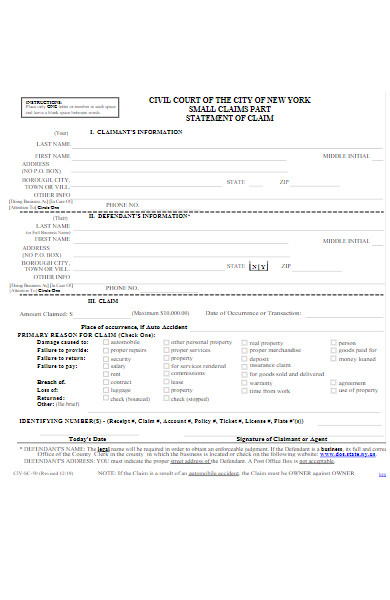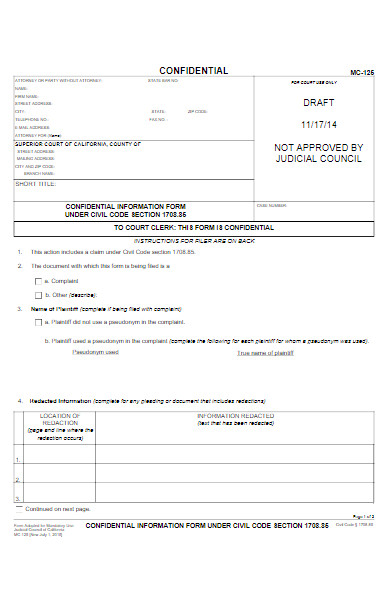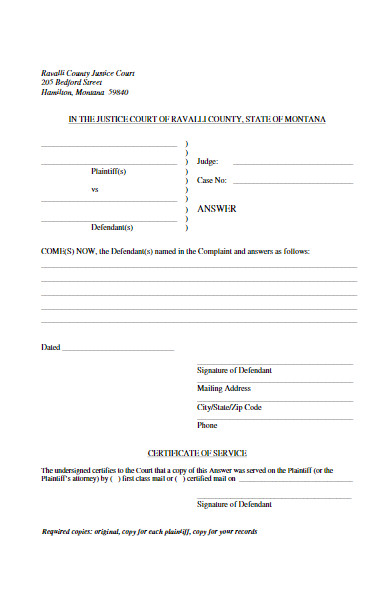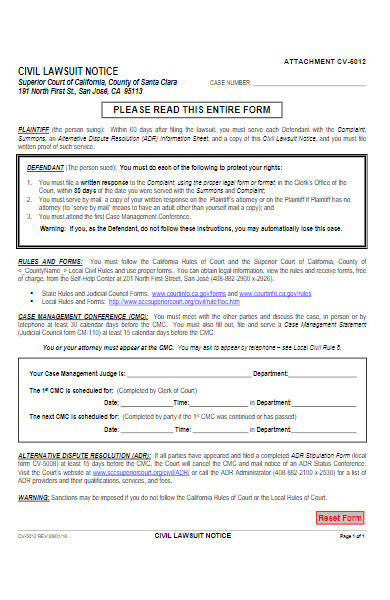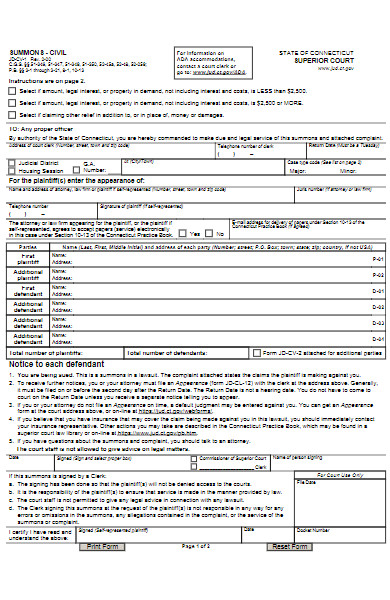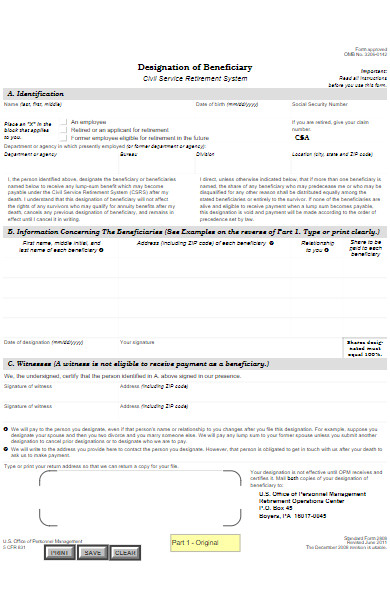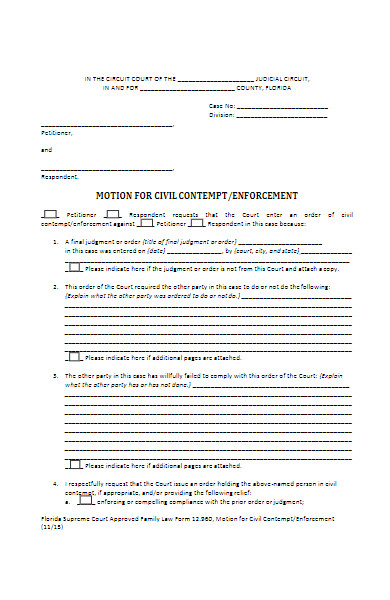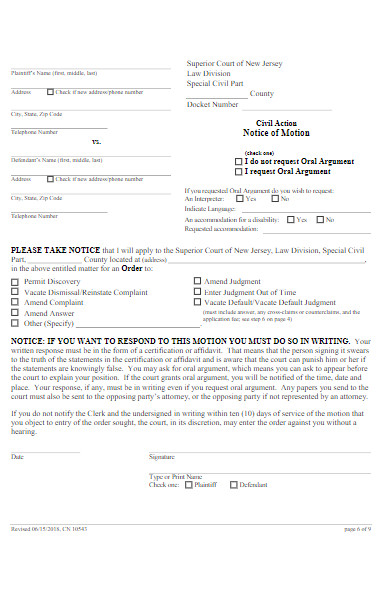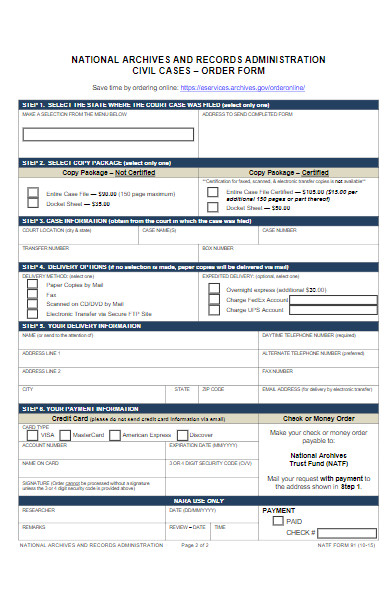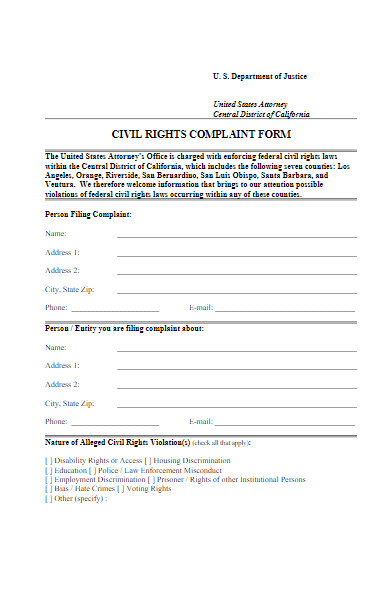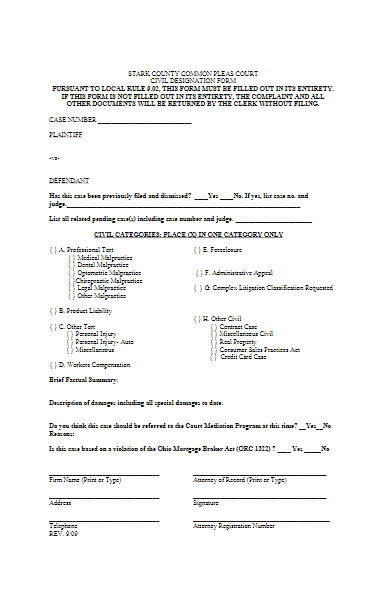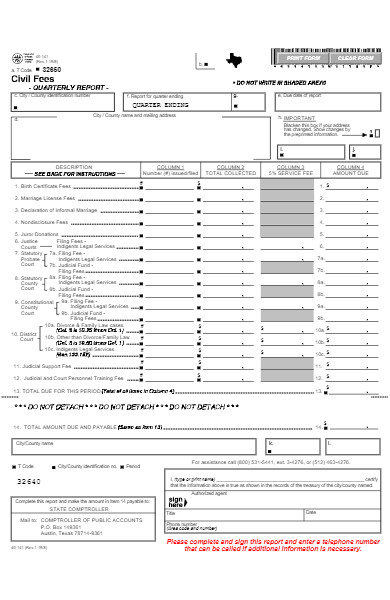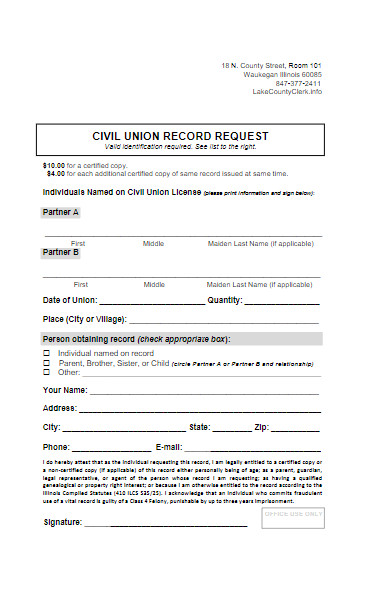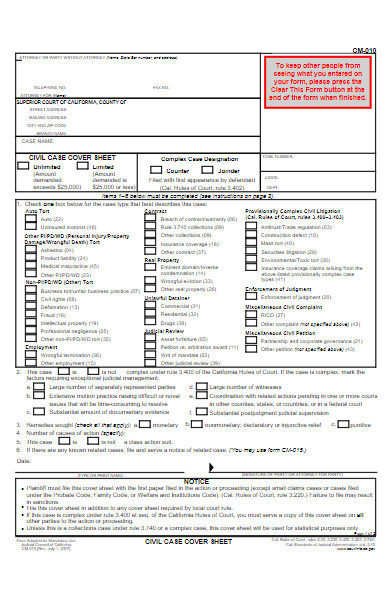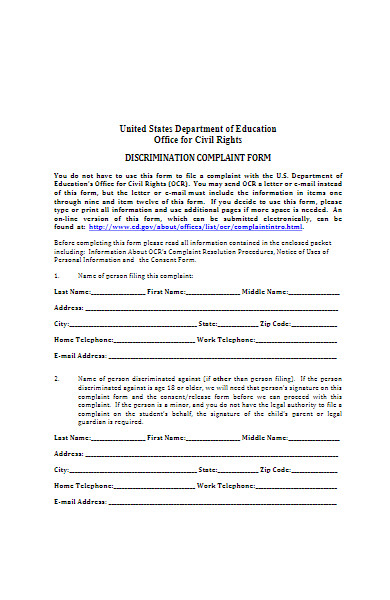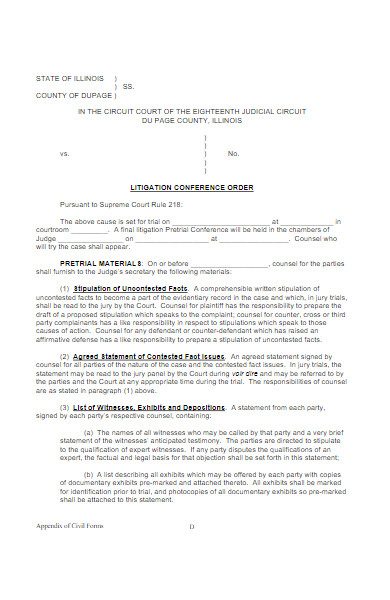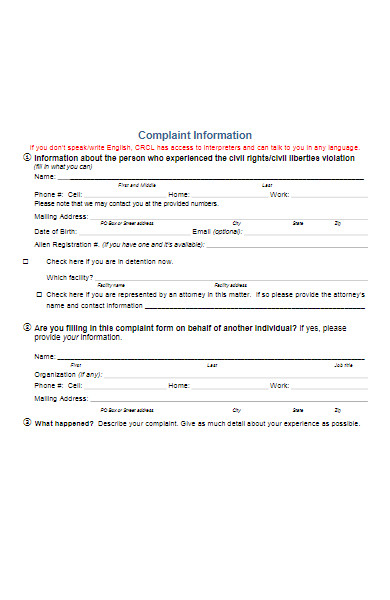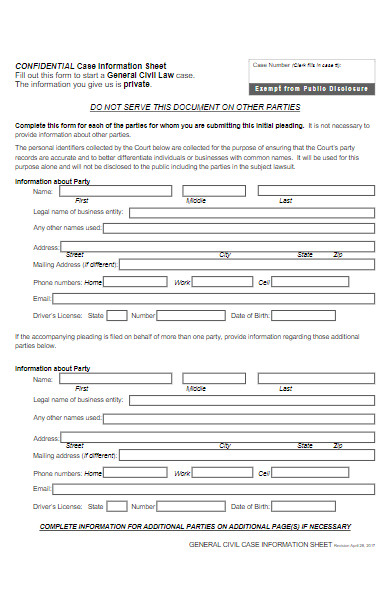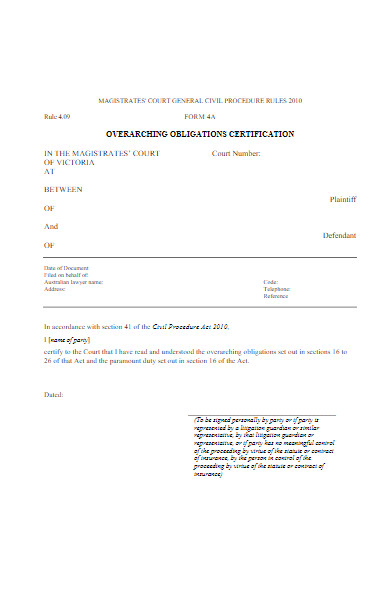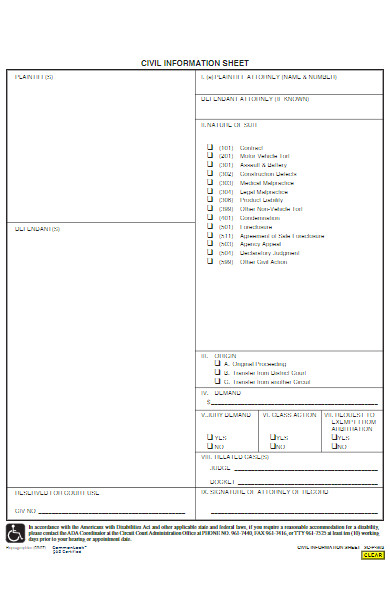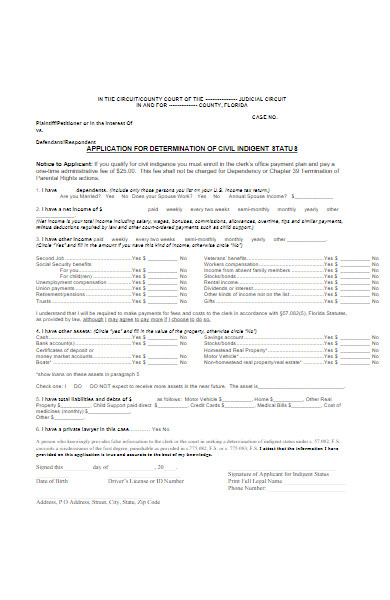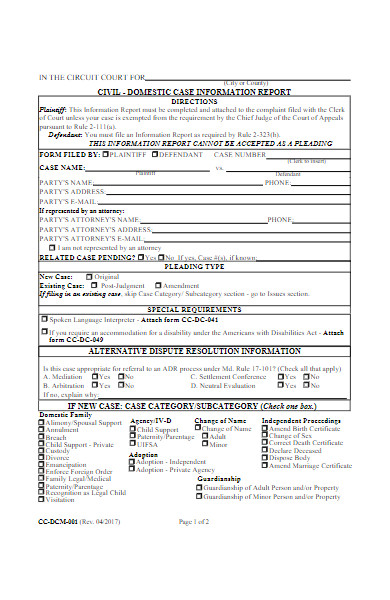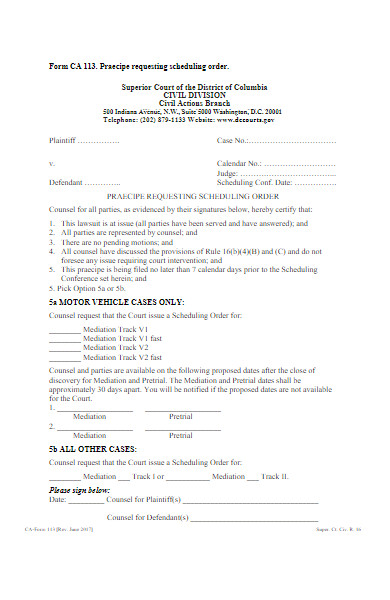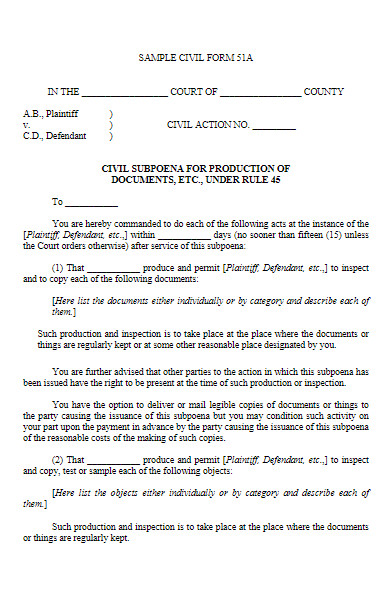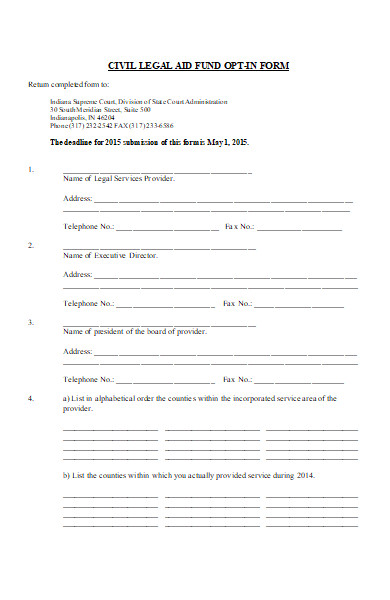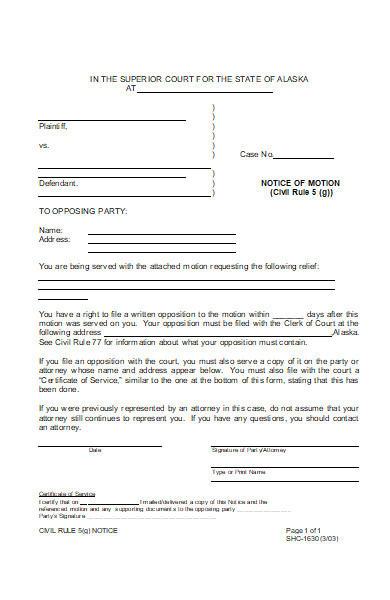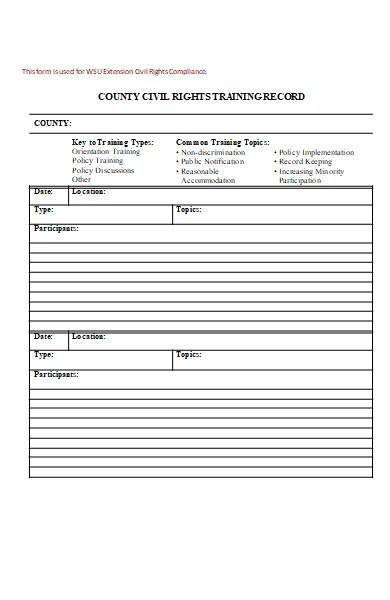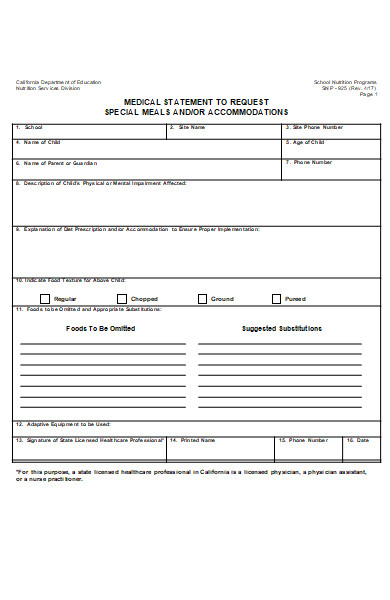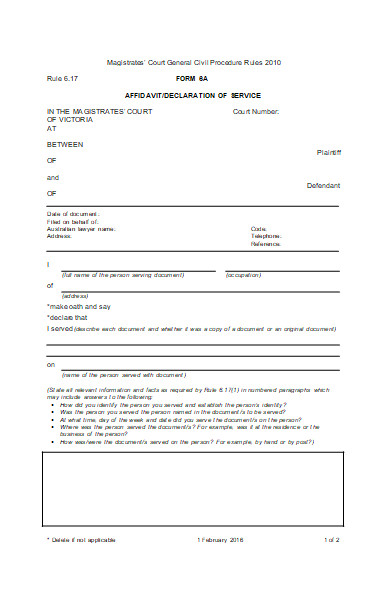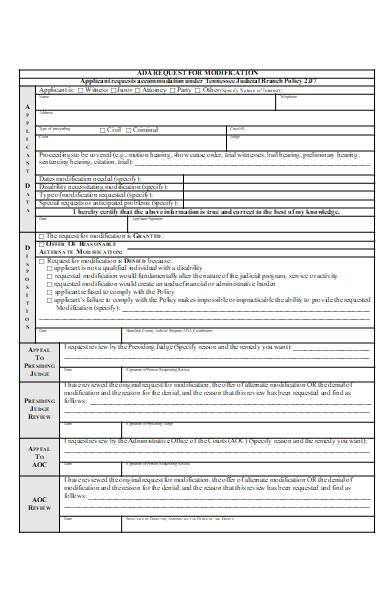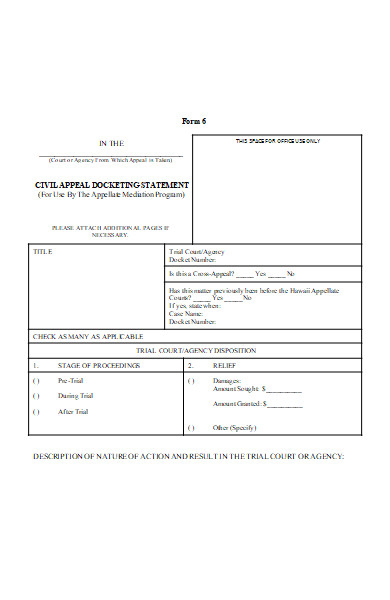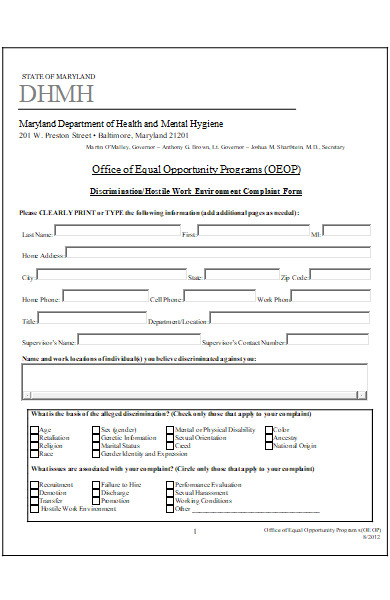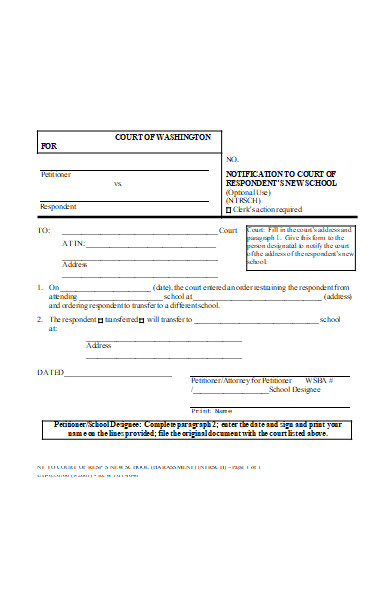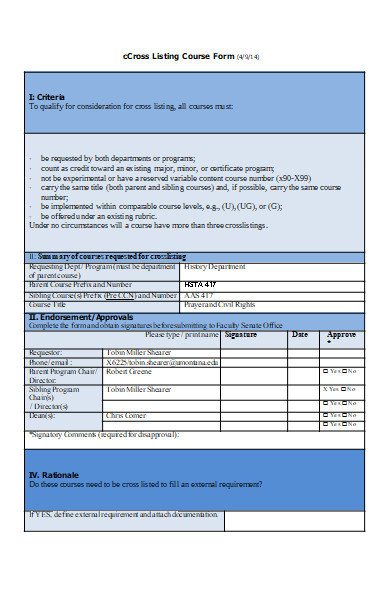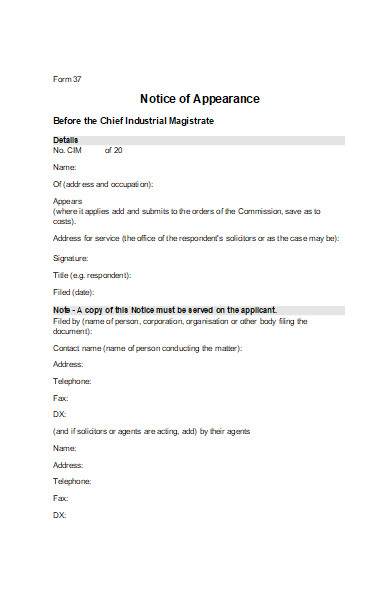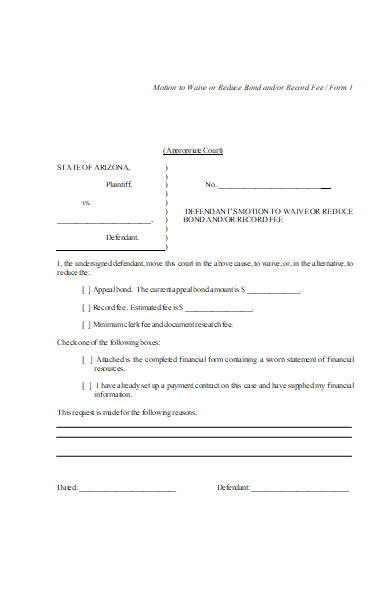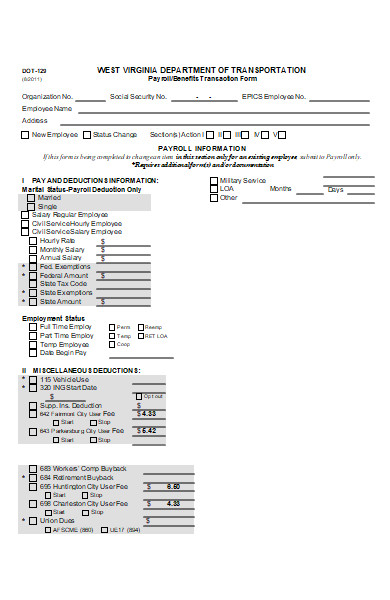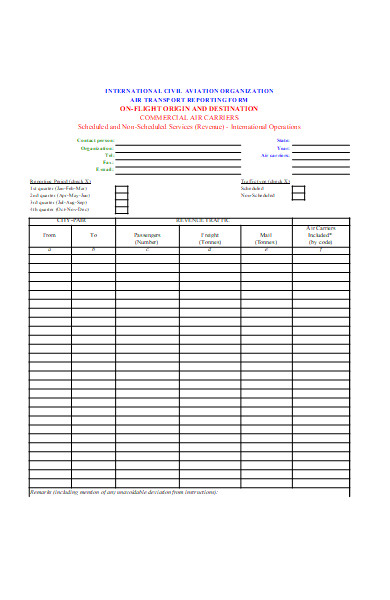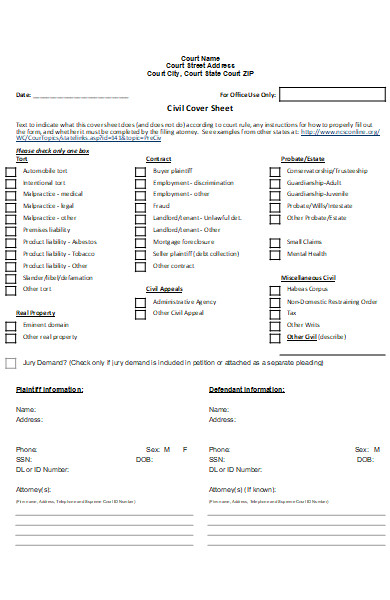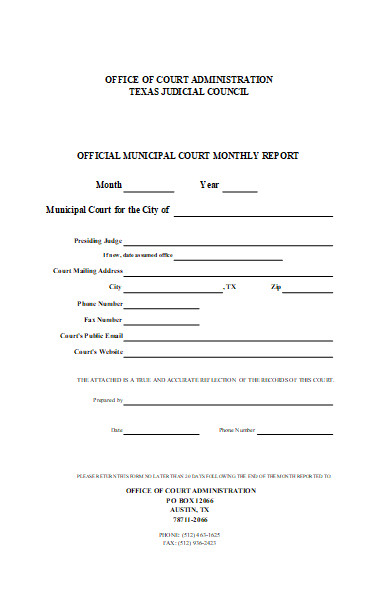A law form serves as a crucial instrument in the legal realm, ensuring standardized communication and documentation between parties. These structured documents vary in type and purpose, encompassing everything from contracts to court submissions. For instance, a will or lease agreement are common examples. Crafting a law form demands precision, a deep understanding of legal stipulations, and clarity in language. When created effectively, these printable forms can seamlessly facilitate legal procedures and safeguard rights, making their design an art in its own right.
What is a Law Form ? – Definition
A law form is a standardized document or template used within the legal realm to facilitate various legal processes and transactions. It is designed to ensure consistent documentation and communication between parties, and it often contains specific fields or clauses to capture necessary details or to meet legal requirements. Law forms can be used for a multitude of purposes, ranging from contracts, wills, and affidavits to court filings and official submissions. Their primary function is to provide a structured framework that aligns with legal standards and principles.
What is the Meaning of a Law Form?
The meaning of a law form pertains to its role and function within the legal system. At its core, a law form is a tool that aids in capturing, presenting, and documenting legal information in a standardized manner. It ensures that specific criteria and legal terminologies are met, allowing for uniformity and clarity in legal transactions and procedures. Whether it’s formalizing agreement form, asserting rights, or submitting official documentation, a law form translates complex legal requirements into a structured and comprehensible format, streamlining processes and reducing ambiguities.
What is the Best Sample Law Form?
Determining the best sample law form depends on the specific legal context or requirement in question. Different situations or legal tasks will necessitate different forms. One universally recognized and frequently utilized form is the Last Will and Testament.
LAST WILL AND TESTAMENT OF [Your Full Name]
I, [Your Full Name], of [Your Address], being of sound mind and memory, do hereby declare this document to be my last will and testament, revoking all previously made wills and codicils.
1. EXECUTOR: I appoint [Executor’s Full Name], of [Executor’s Address], as the executor of this will. If [Executor’s Full Name] is unable or unwilling to serve, then I appoint [Alternate Executor’s Name] as the alternate executor.
2. BEQUESTS:
I direct my executor to distribute my estate as follows:
(a) To [Recipient’s Name], I bequeath [specific asset or amount or percentage of the estate].
(b) To [Another Recipient’s Name], I bequeath [specific asset or amount or percentage of the estate].
… [Continue listing bequests as necessary.]
3. RESIDUAL CLAUSE: All remaining assets not specifically bequeathed shall be distributed to [Name], of [Address].
4. SIGNATURE: In witness whereof, I have set my hand to this will, this [day] of [month], [year].
[Your Full Name]
Witnessed by:
[Witness 1 Full Name] [Witness 2 Full Name]
This is a basic, general template of a sample Last Will and Testament. Depending on jurisdiction, specific needs, and complexities, the content and structure can vary. Often, it requires notarization and might have other witnessing requirements.
It’s essential to remember that while a Last Will and Testament is widely used, the best form always depends on the specific legal context. For any legal document, consultation with a legal professional is vital to ensure accuracy, comprehensiveness, and compliance with local laws. You should also take a look at our Legal Application Forms.
FREE 50+ Law Forms
51. Civil Penalties and Fines Form
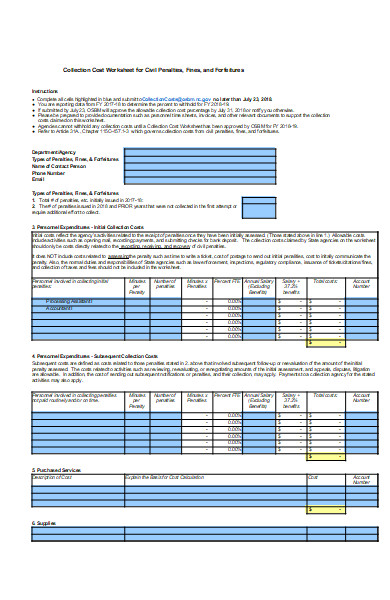
How do I create a law form for my business?
Creating a law form for your business is a crucial task that requires precision, understanding of legal requirements, and careful drafting. Here’s a step-by-step guide to assist you in creating a law form:
1. Determine the Purpose:
Clearly define the purpose of the form. Are you drafting an employment contract, a vendor agreement, a non-disclosure agreement, or some other form? The purpose dictates the content and clauses to be included.
2. Research Legal Requirements:
Different types of forms have specific legal requirements. Ensure you are familiar with local, state, and federal laws relevant to your business and the form’s purpose.
3. Use Templates as a Starting Point:
While it’s advisable not to rely solely on templates, they can be a good starting point. There are many legal form templates available online or in software like Microsoft Word. Make sure any template you use is suited to your jurisdiction and is up-to-date.
4. Draft the Content:
Include all necessary fields and clauses. This might involve:
- Parties involved (e.g., employer/employee, vendor/purchaser)
- Terms and conditions of the agreement or relationship
- Obligations and responsibilities of each party
- Duration and termination conditions
- Confidentiality clauses, if necessary
- Dispute resolution mechanisms
5. Make It Clear and Concise:
Legal language can be complex, but aim for clarity. Avoid unnecessary jargon. The form should be understandable to all parties involved, not just lawyers.
6. Include Protective Clauses:
Depending on the form’s nature, you might need to add clauses that protect your business, such as indemnity clauses, limitation of liability, or clauses about governing law and jurisdiction.
7. Seek Legal Counsel:
Always consult with a legal professional to review the form. They can ensure it’s compliant with current laws, that all essential clauses are included, and that the language used is appropriate.
8. Pilot the Form:
Before officially adopting the form, test it in a real scenario (e.g., with a new employee or vendor). This can help identify any gaps or ambiguities.
9. Regularly Review and Update:
Laws and business needs change. Regularly review and update your forms to ensure they remain compliant and relevant.
10. Implement Digitally (If Applicable):
For businesses operating partially or fully online, consider creating digital versions of your forms. Tools like Adobe Sign or DocuSign can help in creating electronic forms that can be filled and signed digitally.
11. Ensure Safe Storage:
Whether digital or paper, ensure that filled forms are stored securely, respecting any confidentiality or data protection regulations applicable.
Remember, a law form isn’t just about fulfilling a legal requirement; it’s a tool to clearly define and protect the rights, responsibilities, and relationships between parties. Taking the time to craft it carefully can save significant time, money, and potential legal challenges in the future. Our Sample Legal Forms is also worth a look at
Where can I find templates for standard law forms?
Templates for standard law forms are available from a variety of sources. Here are some common places where you can find them:
1. Legal Software:
Many legal software packages, tailored for lawyers and law firms, offer a variety of standard form templates. Examples include Westlaw, LexisNexis, and Clio.
2. Office Software:
Programs like Microsoft Word or Google Docs often have templates or template galleries where users can find basic legal forms such as non-disclosure agreements or basic contracts.
3. Online Legal Platforms:
Websites like LegalZoom, Rocket Lawyer, and Nolo provide an array of legal form templates for common business and personal needs. Some of these platforms might charge a fee, but they often offer guidance on filling out the forms, too.
4. Government Websites:
Many government agencies offer free templates for specific purposes. For instance, the U.S. Small Business Administration (SBA) provides forms related to various business needs.
5. Legal Aid Websites:
Organizations that offer legal aid or support frequently provide free templates for basic legal needs, especially for personal or non-commercial use.
6. Law Libraries:
Law libraries, often found in law schools or courthouses, may have collections of standard form books which contain templates for a variety of legal forms.
7. Bar Associations:
Local or state bar associations sometimes offer form templates, especially for their members, but occasionally to the general public as well.
8. Legal Bookstores:
There are many books available that contain legal form templates, often accompanied by guidance on how to fill them out. Examples include titles like “101 Law Forms for Personal Use” by Nolo.
9. Specialized Websites:
For specific industries or needs, there may be dedicated websites. For instance, sites focusing on landlord-tenant relationships might offer lease or rental agreement templates.
10. Legal Clinics:
Law schools often run legal clinics where they offer legal advice and services. They might provide standard form templates or guide you on where to find them.
11. Professional Organizations:
Depending on your industry, professional organizations might offer specific forms or templates relevant to their field.
Important Note:
While templates are a useful starting point, they are often generic and may not cater to specific nuances or local laws. It’s advisable to consult with a legal professional when using a template to ensure it’s suitable for your specific needs and is compliant with local regulations. In addition, you should review our legal services contract form.
Which law form is required for creating a Power of Attorney?
A Power of Attorney (POA) is a legal document that allows one person (the “principal”) to grant another person (the “agent” or “attorney-in-fact”) the authority to act on their behalf in specific matters or in general. The specific form required to create a Power of Attorney varies by jurisdiction, but they typically share certain elements.
Here’s a basic outline of what a Power of Attorney form might include:
Power of Attorney Form Outline:
- Title: The document should be clearly titled as “Power of Attorney.”
- Identification of Parties:
- Principal: The person granting the authority.
- Agent/Attorney-in-Fact: The person being given the authority.
- Scope of Authority: This section defines the powers being granted. It can be:
- General: Granting broad powers across many aspects.
- Specific or Limited: Granting authority in specific matters, such as selling a piece of property.
- Healthcare: Specifically tailored to make medical decisions.
- Duration: Defines how long the POA will remain in effect. It can be:
- Durable: Continues to be in effect even if the principal becomes incapacitated.
- Non-Durable: Ends if the principal becomes incapacitated.
- Springing: Becomes effective upon a certain event, typically the incapacity of the principal.
- Revocation Clause: Statement allowing the principal to revoke or terminate the POA.
- Governing Law: Indicates the jurisdiction or state laws that will govern the POA.
- Signatures: Both the principal and the agent typically need to sign, often in the presence of witnesses or a notary public.
- Date: The date on which the POA is executed.
Where to Obtain a Power of Attorney Form:
- Online Legal Platforms: Websites like LegalZoom, Rocket Lawyer, and Nolo offer POA forms tailored to different jurisdictions.
- Local Government Offices: Some jurisdictions might offer standard POA forms, especially for specific types like healthcare.
- Legal Aid or Law Clinics: These might provide forms, especially for personal or non-commercial use.
- Law Libraries or Bookstores: POA templates can be found in legal reference books.
- Lawyers: Consulting an attorney is often the best approach, especially if your needs are complex.
Important Note:
It’s crucial to understand the implications of granting a POA. Because laws and requirements vary significantly between jurisdictions, always consult with a local attorney when creating or executing a Power of Attorney to ensure it’s legally valid and accurately represents your intentions. You may also be interested in our Legal Declaration Forms.
How do I fill out a law form correctly?
Filling out a law form correctly is essential to ensuring that the document is legally valid and achieves the intended purpose. Here’s a step-by-step guide on how to fill out a law form correctly:
1. Read the Entire Form First:
Before writing anything, read the entire form to understand its structure, requirements, and the type of information you’ll need to provide.
2. Gather Necessary Information:
Based on your initial reading, gather all the required information and documents. This might include identification details, related documents, or other relevant data.
3. Use Black or Blue Ink:
For hard copy forms, use black or blue ink unless specified otherwise. This ensures clarity and longevity of the written content.
4. Print Legibly:
If you’re filling out the form by hand, ensure your writing is clear and legible. If there’s an option to type your answers, consider doing so for added clarity.
5. Answer All Questions:
Don’t leave any sections blank unless they are clearly labeled as optional. If a question doesn’t apply to you, write “N/A” (Not Applicable) instead of leaving it blank.
6. Be Honest and Accurate:
Always provide truthful and accurate information. Providing false information on a legal form can have serious consequences.
7. Avoid Alterations:
If you make a mistake, rather than crossing out or using correction fluid, it’s often best to start with a fresh form. This ensures clarity and avoids potential confusion or misinterpretation.
8. Check Date Formats:
Date formats can vary (e.g., DD/MM/YYYY vs. MM/DD/YYYY). Ensure you use the correct format as specified on the form.
9. Sign Where Required:
Many legal forms require signatures. Ensure you sign in the designated areas and do not sign until you’re sure about the content or if the form requires witnessing or notarization.
10. Get Witness or Notary Signatures if Needed:
Some law forms require a witness or a notary public to validate your signature. Be sure to follow any specific witnessing or notarization instructions.
11. Keep Copies:
Once the form is completed, make copies for your records. This is essential for reference and in case any disputes or clarifications arise later.
12. Review Before Submission:
Before submitting or finalizing the form, review all your answers to ensure they are complete, accurate, and coherent.
13. Follow Submission Instructions:
Ensure you submit the form to the correct recipient or authority, using the specified method (e.g., mail, online, in-person), and by any given deadline.
14. Consult an Expert if Unsure:
If you’re uncertain about any aspect of the form, or its implications, consult a legal expert. Misinterpretation or errors can have unintended legal consequences.
Final Note:
Legal forms represent a binding declaration or agreement. Taking the time to fill them out carefully and accurately is crucial to ensure that they function as intended and that you’re protected legally. You may also be interested to browse through our other Admission Forms.
What are the most common mistakes people make when drafting a law form?
When drafting a law form, accuracy and attention to detail are paramount. However, even with the best intentions, mistakes can happen. Here are some of the most common mistakes people make:
1. Using Outdated Templates:
Relying on old templates without ensuring they’re up-to-date with current laws and regulations can lead to compliance issues.
2. Overlooking Jurisdictional Differences:
Laws and regulations can vary significantly between jurisdictions. Using a form appropriate for one jurisdiction in another without modifications can create legal discrepancies.
3. Ambiguous Language:
Using vague or unclear terms can lead to misunderstandings and disputes in the future.
4. Omitting Essential Clauses:
Leaving out key provisions or terms can render a form ineffective or lead to unforeseen legal consequences.
5. Not Customizing Templates:
While templates can be a useful starting point, they should be tailored to the specific needs and circumstances of the situation. Using a generic template without customization can miss crucial specifics.
6. Failing to Define Duration:
Not specifying the time frame or duration for which the form is valid can lead to ambiguity.
7. Improper Execution:
Not following the correct procedures for signatures, witnessing, or notarization can invalidate a form.
8. Overcomplicating Language:
Using excessively complex legal jargon, when simple language would suffice, can lead to confusion and misinterpretation.
9. Not Considering All Parties:
Failing to address the rights, responsibilities, and interests of all parties involved can create imbalances and disputes.
10. Ignoring Privacy and Data Protection:
Not adhering to data protection laws and not informing parties about their data rights can lead to legal liabilities.
11. Overlooking Termination Provisions:
Not clearly defining the conditions under which a contract or agreement can be terminated can trap parties in unfavorable conditions.
12. Not Reviewing and Updating Regularly:
Laws and circumstances change. Failing to periodically review and update forms can lead to them becoming obsolete or non-compliant.
13. Failing to Consult Legal Counsel:
Assuming that DIY is sufficient without seeking professional legal advice can result in significant oversights.
14. Ignoring Dispute Resolution Mechanisms:
Not specifying how disputes will be resolved (e.g., through arbitration or court proceedings) can lead to prolonged and costly conflicts.
15. Incomplete or Inconsistent Details:
Providing partial information or having inconsistencies within the form can make it vulnerable to challenges.
Final Thought:
Drafting a law form is a task that carries legal weight and consequences. While templates and DIY methods can be helpful, it’s crucial to approach the process with diligence and, where appropriate, with professional guidance to avoid the pitfalls associated with these common mistakes. In addition, you should review our Enquiry Forms.
Which law forms are essential for small businesses?
For small business owners, navigating the legal landscape can be challenging, but certain legal forms and documents are essential for smooth operations, protection against liabilities, and compliance with regulations. Here are some of the most important law forms for small businesses:
1. Business Structure Documents:
Depending on the chosen structure for the business (sole proprietorship, partnership, LLC, corporation, etc.), there are specific formation documents required:
- Articles of Incorporation: For corporations.
- Articles of Organization: For Limited Liability Companies (LLCs).
- Partnership Agreement: For partnerships, outlining roles, responsibilities, profit-sharing, and other terms.
- Operating Agreement: For LLCs, detailing management structure, member responsibilities, and other internal procedures.
2. Employment and Contractor Agreements:
- Employment Contracts: Detailing terms of employment, salary, benefits, and termination procedures.
- Independent Contractor Agreement: For freelancers or consultants, clarifying the terms of work, payment, and that there’s no employer-employee relationship.
- Non-Disclosure Agreements (NDAs): To protect sensitive business information when discussing business matters with potential partners, employees, or contractors.
- Non-Compete Agreements: Restricting employees or contractors from starting or joining competing businesses for a specified duration and within a certain geographical range.
3. Permits and Licenses:
Depending on the nature and location of the business, various permits and licenses might be necessary to operate legally.
4. Tax-Related Forms:
- Employer Identification Number (EIN) Application: Used to obtain a unique number for tax purposes from the IRS (in the U.S.).
- Sales Tax Permit: If the business sells goods, this may be required to collect tax from customers.
5. Lease or Property Agreements:
If renting commercial space, a lease agreement is essential. If operating from home, a home business permit may be required.
6. Vendor and Supply Agreements:
Contracts with suppliers detailing the terms of product/service delivery, payment, and other obligations.
7. Customer Agreements:
- Service Agreement: Outlining the terms under which you provide services.
- Sales Terms & Conditions: For businesses selling products.
- Warranties or Guarantees: If offering any for products or services.
8. Intellectual Property Protection:
- Trademarks: For business names, logos, and slogans.
- Patents: For unique products or processes.
- Copyrights: For original works like writings, software, and other creations.
9. Insurance Policies:
These are not “forms” in the traditional sense but are critical. Depending on the business, this might include liability insurance, property insurance, worker’s compensation, etc.
10. Buy-Sell Agreements:
For businesses with multiple owners, this agreement sets the terms under which an owner’s stake in the business can be sold or transferred.
11. Online Business Specific:
- Privacy Policy: Outlining how customer data is used and protected.
- Terms of Use: For websites or apps, setting the rules for usage.
12. Dispute Resolution Agreements:
Detailing how potential disputes with partners, employees, customers, or vendors will be addressed.
Important Note:
This list is not exhaustive, and the specific blank forms required can vary based on location, industry, and other specific circumstances. Consulting with legal professionals familiar with local regulations and industry norms is crucial for any small business.
How do I get a notarized law form?
Getting a law form notarized lends additional legitimacy to the document by confirming the authenticity of signatures and identities of the parties involved. Here’s a step-by-step guide on how to get a law form notarized:
1. Prepare the Document:
Ensure that the law form you want to be notarized is completely filled out, excluding the signature(s). The actual act of signing typically needs to be witnessed by the notary.
2. Locate a Notary Public:
Find a notary public in your area. Common places to find them include:
- Banks or credit unions (some offer free notary services for their customers).
- Law or real estate offices.
- Courthouses or local government offices.
- Public libraries.
- Shipping centers (e.g., UPS or FedEx stores).
- Some retail stores or pharmacies.
- Online directories or mobile notary services.
3. Gather Identification:
The notary will need to verify your identity. Bring a valid photo ID such as:
- Driver’s license.
- Passport.
- State-issued ID card.
- Military ID.
4. Visit the Notary:
Schedule an appointment or visit the notary’s office/location. Some notaries accept walk-ins, but others may require an appointment.
5. Sign the Document:
Under the notary’s observation, sign the document. If there are multiple signers, each person should be present to sign in front of the notary.
6. Pay the Fee:
Notaries might charge a fee for their services. The fee can vary based on your location, the type of document, and other factors. Some organizations, as mentioned, might offer notary services for free to their members or clients.
7. Notary Completes the Process:
The notary will then:
- Confirm your identity using your ID.
- Witness the signing.
- Stamp the document with an official seal.
- Fill out the notary certificate attached to the document or provide one, if necessary. This typically states the date, the notary’s name, the signer’s name, and details about the type of identification provided.
8. Keep Copies:
Always make a copy of the notarized document for your records.
9. Submit the Notarized Document:
If the notarized form needs to be submitted to a particular agency, institution, or individual, ensure you follow the necessary submission procedures.
Important Notes:
- If the document is to be signed by multiple parties and one party is not present, you’ll need to return to a notary once that party is available to sign.
- Some documents may require the notarization of the notary’s own signature by another official, known as an “apostille,” especially for international use.
- Not all documents need notarization. Ensure that notarization is either required or beneficial for your specific document before seeking out a notary.
Always remember to check your local laws and requirements concerning notarization, as they can vary by jurisdiction.
Tips for creating an Effective Law Form
Creating an effective law form requires a combination of legal precision, clarity, and user-friendliness. An effective law form ensures that both parties understand their rights, responsibilities, and the terms of the agreement. Here are some tips to keep in mind:
1. Clearly Define the Purpose:
Each law form serves a specific purpose, whether it’s an employment contract, lease agreement, or power of attorney. The purpose should be evident right from the beginning.
2. Use Simple Language:
While legal jargon might sometimes be necessary, strive for clarity and simplicity. The aim is for anyone reading the document, even without a legal background, to understand its terms.
3. Be Comprehensive:
Address all potential issues or concerns that might arise. For instance, an employment contract should detail salary, benefits, work hours, grounds for termination, etc.
4. Include Parties’ Details:
Clearly state the names, addresses, and other relevant details of all parties involved. This reduces ambiguity about who is bound by the form’s terms.
5. Specify Dates and Duration:
Clearly indicate the effective date of the agreement and, if applicable, its duration or expiration date.
6. Detail Responsibilities and Rights:
Ensure that responsibilities and rights for each party are outlined comprehensively and clearly.
7. Address Contingencies:
Include clauses for unexpected situations, such as dispute resolution, force majeure events, or breaches of agreement.
8. Include Governing Law:
Specify which jurisdiction’s laws will apply in case of disputes. This is crucial for agreements involving parties from different jurisdictions.
9. Add Signature Blocks:
Leave space for all relevant parties to sign and date the form. Also, include areas for witnesses or notary publics if required.
10. Include Privacy and Confidentiality Clauses:
Given the increasing importance of data protection and privacy, ensure relevant clauses are in place, especially if personal data is handled or shared.
11. Provide Instructions:
In complex forms, offer a brief section detailing how the form should be completed, which can be especially useful for forms meant for public use.
12. Regularly Update:
Laws and regulations evolve over time. Ensure your forms remain compliant and relevant by revisiting and updating them as necessary.
13. Seek Legal Review:
Before finalizing and distributing any law form, have it reviewed by legal professionals to ensure its validity and compliance.
14. Maintain Consistency:
If you’re drafting multiple forms or updating a series of documents, ensure there’s consistency in language, format, and terms.
15. Use Quality Materials:
If distributing physical copies, use durable, quality paper, especially for documents like deeds or certificates that need longevity.
16. Offer Clarity on Modifications:
Specify if and how the document can be amended in the future, ensuring both parties agree on any changes.
Final Thought:
Creating an effective law form is a balance between legal precision and user accessibility. It’s essential not only to protect rights and interests but also to foster understanding and cooperation between parties. Always consider the user’s perspective and, when in doubt, seek legal expertise.
A law form is a standardized legal document, serving to define rights, responsibilities, and procedures. With various types catering to different needs, from contracts to powers of attorney, understanding its meaning is crucial. Crafting one demands precision, clarity, and legal knowledge. By familiarizing oneself with its types, creation steps, and best practices, one ensures both legal compliance and clear communication. You should also take a look at our Legal Petition Forms.
Related Posts Here
-
FREE 10+ Car Sale Forms in PDF
-
FREE 3+ Acknowledgment of Paternity Forms in PDF
-
FREE 10+ Trademark Assignment Forms in PDF | MS Word
-
FREE 13+ Trademark License Agreement Forms in PDF | MS Word
-
FREE 14+ Legal Waiver Forms in PDF | MS Word
-
FREE 5+ Movable Hypothec Long Forms in PDF | MS Word
-
FREE 4+ Articles of Association Long Forms in PDF | MS Word
-
FREE 4+ Limited Partnership Agreement Long Forms in PDF | MS Word
-
Employee Dress Code Policy Form
-
Rental History Form
-
Advertising Contract Form
-
Service Agreement Form
-
Income Statement Form
-
Accident Statement Form
-
Performance Review Form
